Kayak Construction
Kayaks vary a lot in price, and a lot of that has to do with construction. There are three main types of construction: composite layups, rotomolded polyethylene, and thermoform.
As you probably know already it all boils down to one ground rule: you get what you pay for. But buying a kayak can be daunting. It helps to have a basic understanding of the different construction types and the pros and cons of each so you can decide what best suits your needs and budget.
Composite Kayaks
You'll recognize these boats because they'll be the ones you gravitate to in the showroom. They are glossy, colourful, and often have beautiful sharp lines. The hull may be a different colour from the deck and there is a seam between them where the two halves were attached together.
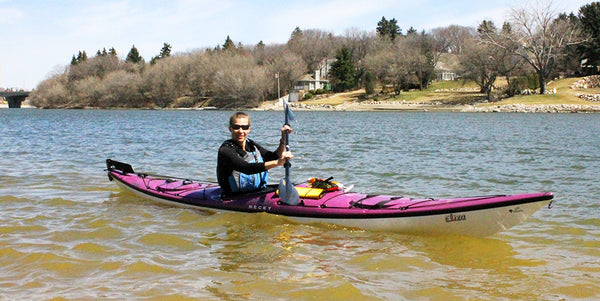
These are made of fabric such as fiberglass or kevlar (or a hybrid) bonded by resin. Vacuum bagging (see photo below) sucks all excess resin out so the kayak is as light as possible. They often have cores inserted in the laminate to stiffen the boats. The glossy outside is either a clear coat or a coloured gel coat which protects the laminate.
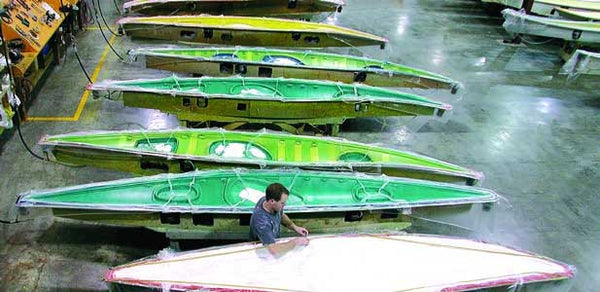
Pros
- usually the lightest weight boats
- the stiffest types of boats, so best performing
- easiest to repair
- longest lasting
Cons
- usually expensive, especially kevlar, due to hand labour
- don't take hard impact as well as plastic boats
Maintenance
Gel coat: This stuff is tougher than you think. It will scratch - that's what it's there for - but the fabric underneath will be fine (unless you hit really hard). You can buy gelcoat and fix up the scratches.
UV protection: For composite boats, treat them with a boat wax a couple times a year. We recommend something like Starbrite Premium Marine Polish or McLube Hullkote.
Hull damage: Composite boats are repaired with fiberglass fabric and resin. You can repair small holes with resin alone and then sand smooth.
Rotomold Kayaks
Affectionately known as "Tupperware" kayaks, these boats are made of polyethylene (actually the same plastic as Tupperware). Being a tough and fairly soft plastic, polyethylene kayaks are great at absorbing big impacts and sliding over rocks. Whitewater boats are usually made of this for exactly those reasons, but there are many models of recreational and touring kayaks made this way as well.
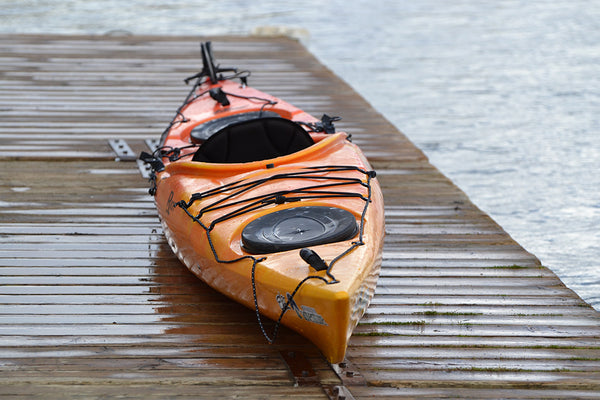
The rotomolding process involves pouring poly powder into a two part mold which is rotated as it is heated in a huge oven (think of all the cookies you could bake at one time!). As the powder melts it coats the inside of the mold, so these kayaks have decks and hulls of the same colour, being all one piece.
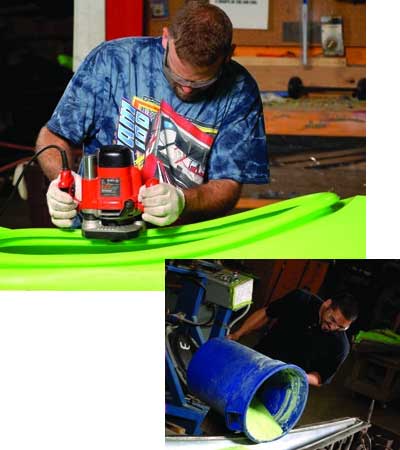
The process doesn't take long, so labour costs are lower. The kayak is then cooled and tooled. These boats don't have the glossy finishes of composite or thermoform kayaks and tend to be heavier, but they are the most affordable.
Pros
- inexpensive
- durable
- impact resistant
Cons
- heavy
- difficult to repair (most adhesives don't stick to polyethylene)
- boat flexes while paddling (doesn't respond as well as a stiff boat)
- deforms in the sun
- many small scratches over time may lead to "fuzz" developing; creates drag
Maintenance
UV protection: Plastic boats really need their sunscreen, otherwise known as 303 Aerospace Protectant. This stuff doesn't have silicone in it (like other automotive sprays) and is non greasy. Apply this every so often through the paddling season and it will greatly increase the life of your boat.
Fuzz: Over time the plastic hull of your boat will develop tiny little burrs from scraping against things. This is because the poly is soft. If you don't like the look of it or can feel drag as you paddle, you can buy a pack of disposable razors and literally shave your boat smooth.
Deforming: Sometimes parts of a polyethylene hull will deform due to uneven pressure from storage or transport. This happens more readily when the plastic is soft, such as in warm weather or in the sun. Don't worry - in most cases simply leave your boat in the hot sun and it will reform into its original shape. For stubborn areas you can soften the plastic by layering 4 towels over the area and dousing repeatedly with boiling water, then use your hands or a broom handle to massage the plastic back into shape. Just make sure not to overheat the plastic to melting point.
Thermoform Kayaks
You can think of these as a compromise between poly and composite kayaks. Thermoform boats are usually in the mid-range for price, although variation in material quality affects this a fair amount. They have the good qualities of plastic but are easy to repair and are almost as light and stiff as composite boats.
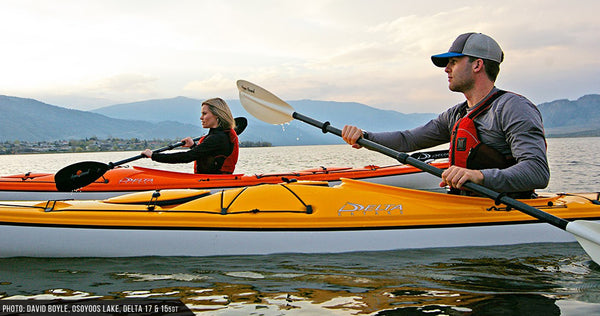
Thermoform boats typically use higher quality plastics than rotomolded ones. The polyethylene pellets are extruded into a flat sheet and sandwiched into a multi-layer material. Usually the outer layer is acrylic, which has excellent UV resistance and gives the boat it's glossy, richly coloured exterior. The next layer gives structural integrity to the boat and is often a form of high impact ABS.
The sheet is heated and then stretched over the mold where a vacuum process sucks it down into the fine detailing. After it is cooled, the hull is trimmed, assembled and detailed.
Pros
- excellent UV protection
- lighter and stiffer than rotomolded boats, less expensive than composite
- glossy, hard exterior - more abrasion resistance than rotomolded boats
- won't distort in the sun
- easy to repair with fiberglass cloth
Cons
- May not last as long as composite boats; ABS becomes brittle over time
- Not quite as stiff or light as composite boats
Maintenance
UV protection: Like any plastic boat, use 303 Boat Sunscreen (mentioned above).
Scratches: You can't just paint with a matching gelcoat as you can a composite boat, but you can use wet sandpaper to smooth the scratch, then use a plastic polish (such as Novus brand). Small scratches can be polished out. Deeper ones may require filling with an acrylic repair putty, sanded, then painted with urethane, enamel or acrylic spray paint (such as Krylon).
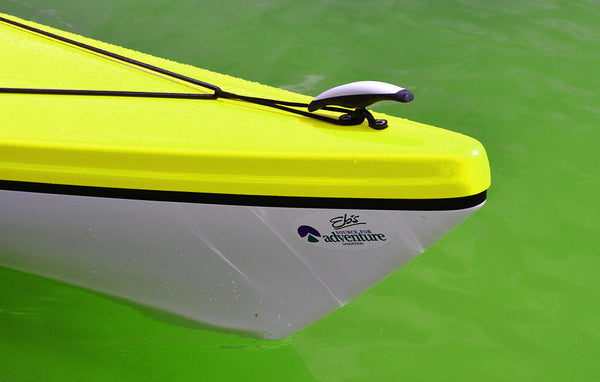


Leave a comment